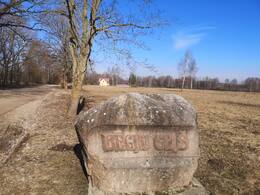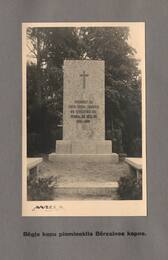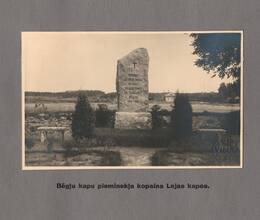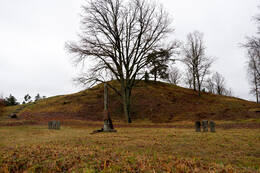WW1 Refugees I WW1, II WW2
World War I refugees
April refugees
The first German attack on the region was aimed at Lithuania, reaching Siauliai. This caused Lithuanians and Jews in Kaunas province to flee towards Zemgale. On April 17, 1915, the first refugees reached the vicinity of Bauska. The first refugees arrived in Riga via Jelgava on April 18. The city provided some entry points for refugees and opened two dining points. The main concerns were taken by Jewish and Latvian organizations. On April 19, a catering point was opened in the house of the Latvian Society, feeding about 1,000 people every day. Refugee shelters were set up in the premises of the Latvian school and student corporation Talavija and Selonija. The escape from Liepaja started on April 21 inside Kurzeme. Refugees from Liepāja and Aizpute districts initially settled in the forests of Valtaiķi, Laida and Skrunda, hoping for a soon Russian military success that will allow them to return home. On April 25, the Germans captured Kuldiga and further attacked Aizpute, so some of the Kurzeme refugees were returned from the rest of Russia and returned home.
July refugees
The German Kurzeme offensive quickly began in the summer, and in June the Russian army fled Kurzeme again. The governor and the authorities had already left Jelgava at the end of June. Soldiers set fire to crops and houses in many places, drove away cattle, and forced the population to flee. The refugees were ordered to head east. On July 2, a large refugee movement began from the Pampali, Ezera, Auce, Talsi, Kandava, Tukums and Dobele areas. On July 5, large flows of refugees began to flow through Bauska, where bridges over rivers and roads leading to Koknese and Daugavpils were located. Another large column headed for Riga. The total number of refugees at that time could be 300-400,000, bringing with them millions of cattle, pigs and sheep. A long queue of 20 refugees was formed in Jaunjelgava. Lack of food and water began. Some of the refugees remained in Vidzeme province. Most of the refugees went to Russia via Vidzeme and Latgale. Latvians in Russia were often considered Germans. The refugees were not allowed to settle in the cities, but were sent on to Inner Russia and Siberia. The National Council of Siberian and Uralic Latvians was later established here, representing about 200,000 Latvians. Some of them were settlers who had already moved to Siberia during the tsarist government, which divided the land here.
More information sources
http://pedas.lapamuzejs.lv/?page_id=1180 (viewed on November 4, 2021)
https://en.wikipedia.org/wiki/First_World War_Latvia
Related timeline
Related objects
Memorial stone "Refugee Road"
Daugamale parish, Kalniņi. On the Ķekava - Jaunjelgava road (P85), on the left.
During World War I, the so-called Refugee Road led through Daugamale. In 1915, when German troops entered, refugees from Kurzeme and Zemgale crossed the Daugava to Riga, Vidzeme and Russia. In the countryside of Latvia, the refugee movement covered hundreds of thousands of people. A total of at least 850,000 Latvian residents went as refugees. The exact number of refugees is unknown, as a large number of refugees were not counted. Refugees went not only to Vidzeme and Latgali, but a large part traveled further to Russia, mainly to its big cities. Along the way, they usually lost all their livestock, including livestock, which either died on the way or were bought off by the army for a pittance.
1991 the road is marked by the stone of the sculptor Vilnius Titan laid by the Culture Foundation. It has the inscription "Refugees' road", and on the stone there are, as it were, footprints of small bare feet leading away from home.
Monument to Kurzeme and Zemgale refugees of the First World War
Located in Bērzaine cemetery
Monument to refugees of the First World War of Kurzeme and Zemgale.
On February 17, 1933, a refugee committee met in Riga, which decided "to work as a unit at the Cēsis city parish with the aim of collecting and beautifying the graves of refugees, as well as erecting memorials in the cemeteries of Cēsis and the surrounding area".
By May 1935, 6,883.20 lats had been donated.
On February 11, 1936, he agreed with the sculptor Kārli Jansons on the construction of monuments in the Leja and Bērzaine cemeteries. Both monuments were opened on June 14, 1936, and they cost 4,600 lats.
The granite steps of the Bērzaine cemetery lead to a hill, where a stele rises above the two-step base. A bronze cross stands out on the smooth granite surface, under which the words in bronze letters:
MENTION HERE
MAY YOU REST IN THE PEACE OF GOD
472 KURZEMES AND
ZEMGALE REFUGEES
1915-1918
Monument to refugees of the First World War in Kurzeme and Zemgale in the Leja cemetery
It is located in the Lower Cemetery of the city of Cēsis.
Monument to the refugees of the First World War of Kurzeme and Zemgale.
In the lower cemetery, a rough-hewn granite stele rises above the four-sided base, with a bronze cross in the upper part. Below it follows a message in bronze letters:
REMEMBER
GOD BE IN PEACE
STROKING
96 CURZEMES
AND ZEMGALES
REFUGEES
1915-1918
On February 17, 1933, a refugee committee met in Riga, which decided "to work as a unit at the Cēsis city parish with the aim of collecting and beautifying the graves of refugees, as well as erecting memorials in the cemeteries of Cēsis and the surrounding area".
By May 1935, 6,883.20 lats had been donated.
On February 11, 1936, he agreed with the sculptor Kārli Jansons on the construction of monuments in the Leja and Bērzaine cemeteries. Both monuments were opened on June 14, 1936, and they cost 4,600 lats.
Girnikų piliakalnis
Piliakalnis yra Šiaulių rajone, tai aukščiausias kalnas rajone, iškilęs 183,4 m virš jūros lygio.
Nors nėra tiesioginių įrodymų apie kalno ryšį su baltų kultūra ar jo dirbtinę kilmę, vietos legenda pasakoja, kad kalną iš nukautų priešų lavonų supylė milžinas Anculis. Ant kalno daugiau nei 100 metų švenčiamos Joninės. 1905 m. balandžio 24 d., minint spaudos draudimo panaikinimo metines, kunigo J. Vizbaro iniciatyva ir remiant grafams Pliateriams ant kalno buvo pastatytas paminklinis kryžius, kurį vėliau sunaikino sovietų valdžia. Pirmojo pasaulinio karo metais, apie 1915 m. prie Girnikų piliakalnio vyko nuožmūs mūšiai, dalis žuvusiųjų, apie 240 Vokietijos karių buvo palaidota šiaurinėje jo papėdėje.
Šiandien 1914-1918 m. žuvusiesiems bei čia palaidotiems atminti stovi medinis kryžius su memorialine lenta ir trys simboliniai betoniniai kryžiai.
Related stories
Memorial sites and burials of refugees from Kurzeme and Zemgale in Cēsis
Before the First World War, 2552 thousand people lived in the territory of Latvia. people. The 1920 census registered 1,596 thousand people. people. This means that during this period the population of Latvia had decreased by 956 thousand. people or by 37.5%.
In the summer of 1915, German troops occupied Kurzeme and Zemgale. More than half a million refugees fled their homelands in an endless stream. The first refugees arrived in Cēsis in April 1915.
From Adolf Ers' book "Vidzeme in the Freedom Fights" about the life of refugees in Valka
From the time of the refugees, Valka agreed to play a more important role than other cities in Vidzeme, because the politically active newspaper Līdums was located here, where Latvia's spiritual and political weapons were minted, and also because there was a crossroads where roads from three On the Latvian side: from Riga, Alūksne, Mozekile, and also from Estonia and Russia, she had links with refugees everywhere - in Tartu, Pliskava, Moscow and St. Petersburg. There was a large refugee center here.









